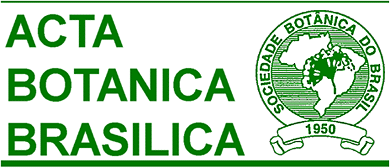Resumo em Inglês:
ABSTRACT Ultraviolet B radiation has been described as a potential elicitor agent of the synthesis of secondary metabolites in plants. Thus, the present study aimed to investigate the production of betalains and total flavonoids, as well as the antioxidant activity, of Alternanthera sessilis, A. brasiliana, A. tenella and A. philoxeroides exposed to different periods of UV-B radiation (280-315 nm). Plants of these four species were exposed to UV-B radiation for 0, 2, 4, 6, and 8 hours, which amounts to 0, 10, 20, 30, and 40 J cm−2 of radiation, respectively. Significant increases in betacyanin and betaxanthin levels were observed in A. sessilis and A. brasiliana during the period of UV-B exposure, while no differences were observed for the others species. The highest estimated flavonoid levels were for A. sessilis exposed to UV-B radiation for 8 h, followed by a 24-h recovery period. In conclusion, the action of UV-B radiation as an inducer of defence responses in plants is influenced by increasing exposure periods followed by a recovery period. Both increase the levels of these composts, yet this increase is different among the four Alternanthera species, having a greater influence on the species A. sessilis and A. brasiliana.
